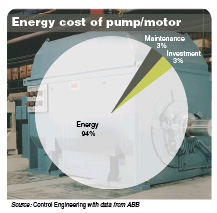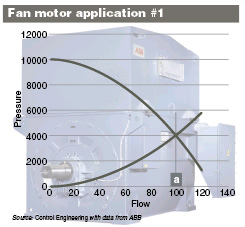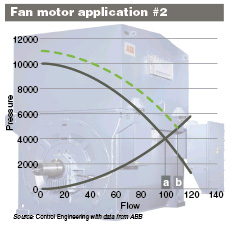Overcompensation has been a standard practice in engineering to ensure a system can handle whatever the user or environment might throw at it. In a world where excessive Energy use is both impractical and costlywww.cechina.cn, this practice must be revisited.

Energy accounts for the largest part of the total cost of operating a pump or fan motor.
Of all resources on which modern manufacturing is dependent, energy is arguably the most fundamental. It is also a resource that has long been taken for gra
Lack of standards = inefficiencies
A recent presentation to the American Council for an Energy Efficient Economy referenced a study that looked into the internal practices of a leading chemical company and of two major engineering contractors that company used on recent projects. The focus of the studyCONTROL ENGINEERING China版权所有, “Energy Efficiency for Industry,” was to identify whether the size of the installed pumps matched the real need. The results showed that 90% of the pumps were not correctly sized. If such a high percentage of installations are incorrectly matched in this companyCONTROL ENGINEERING China版权所有, how many are equally mismatched in other companies around the world?

The "true" condition of this sample applicationCONTROL ENGINEERING China版权所有, 100 units of flow, requires 4,000 units of pressure (point "a")

Ten percent reserve "b" is added to the fan specification "a", to be on the safe side concerning maximum flow.
This example further illustrates the problem faced by system design engineers. When projecting a system, there is a degree of uncertainty as to the shape of the system. FrictionCONTROL ENGINEERING China版权所有, pipe cross section changes, and the number of 90-degree turns in the final pipe layout all take their toll. These factors add to the risk that the expected operating conditions will not be met. As a result, there are three basic ways to address the chan


 在线会议
在线会议 论坛
论坛 专题
专题 工控直播
工控直播 新闻中心
新闻中心 子站
子站 技术
技术 社区
社区



 IDEC HR8S系列新一代安全继电器有奖试用活动
IDEC HR8S系列新一代安全继电器有奖试用活动 2025(第二十一届)年度最佳产品奖有奖投票中
2025(第二十一届)年度最佳产品奖有奖投票中 AVEVA剑维软件食品饮料行业白皮书有奖下载
AVEVA剑维软件食品饮料行业白皮书有奖下载 立即有奖下载TE重载连接器选型指南
立即有奖下载TE重载连接器选型指南 2025(第十四届)全球自动化和制造主题峰会
2025(第十四届)全球自动化和制造主题峰会




























